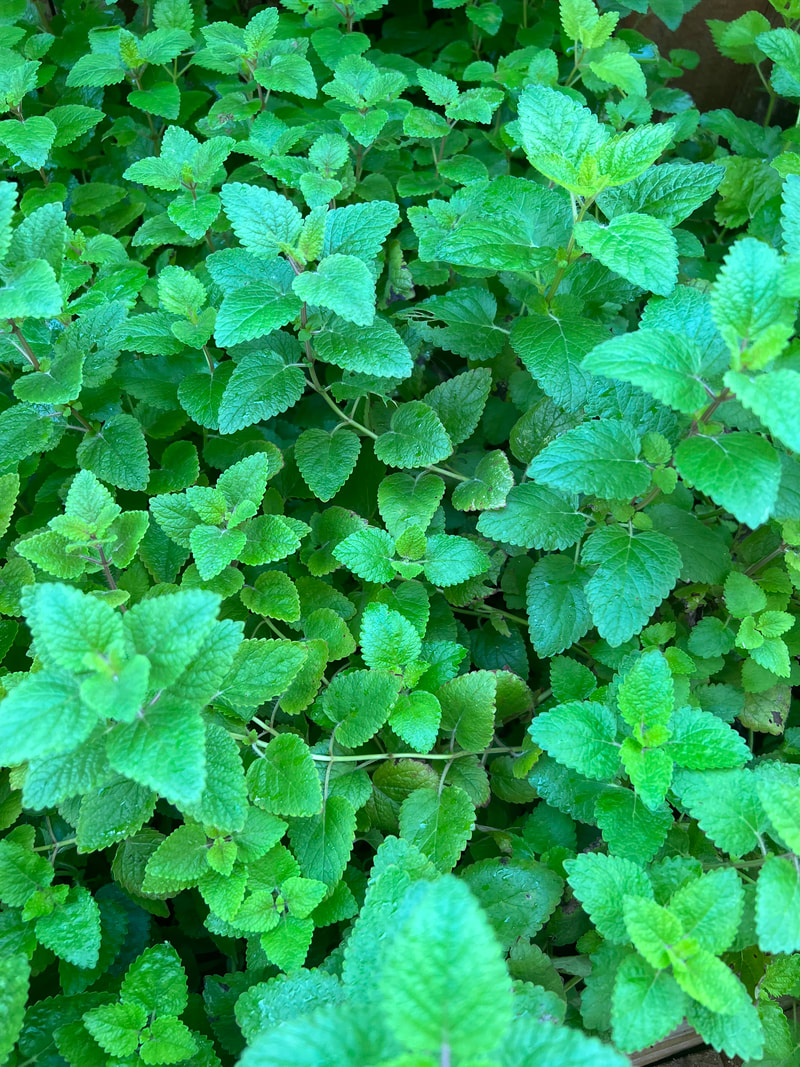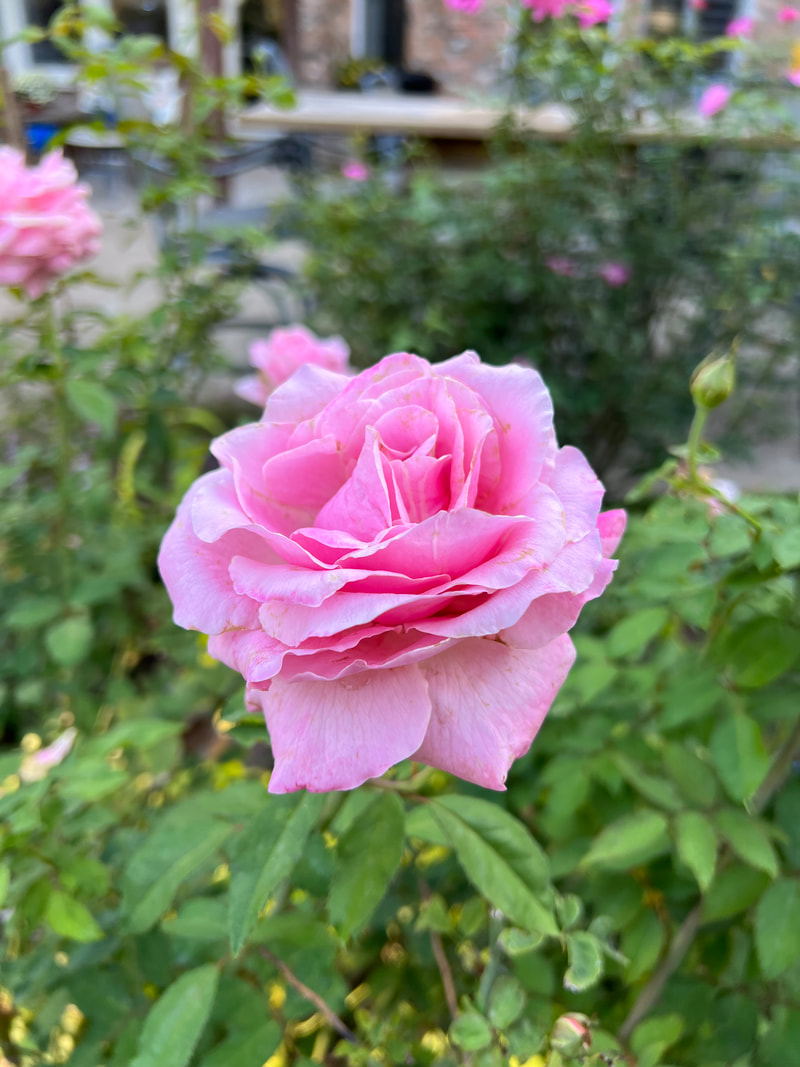|
Doesn't this look fresh? Lemon balm, Melissa officinalis, is an important plant in our herb garden. A gentle press to the leaves releases a fragrance that's green, citrusy, and deep. I love it, especially in tea (hot and cold). It's good for you, too, with a wide range of benefits.
The genus name surprised me. Melissa? Why? When I looked it up, I learned that the name comes from the classical Greek word melissa, which means "bee" and meli, which means "honey". Moreover, the Melissae were nymphs in Greek mythology as well as oracles. They were said to be able to take the form of bees. Lemon balm does attract bees and has been used by beekeepers for centuries. In ancient times, it was presumed that its power to attract also affected humans. It was believed to improve beauty, sexuality, and fertility. These benefits haven't been proven in modern medicine to any great extant. What has been found is that lemon balm is good for digestion and has a certain, lightly sedative effect. For centuries, lemon balm tea has been recommended to reduce headaches and help with menstrual cramps. The medieval physician Paracelsus called it "the elixir of life". The good news is that this herb, a member of the Lamiaceae or mint family, is very easy to grow. It's boisterous but not invasive and can be pulled up easily. It can be used in beverages and baking and of course in aromatherapy. Centuries ago, the nuns of the Abbey of St. Just in Paris created "Eau de Mélisse", otherwise known as Carmelite water. It was known for its fragrance as well as medicinal qualities. I was astounded to learn that the formula was purchased by the Boyer family in the 1800s and is still sold in French pharmacies today. In addition to lemon balm, it has lots of other natural ingredients such as chamomile, cinnamon, and rosemary, to name just a few. You can find the very interesting history of the tonic at the Boyer website. Tea time!
0 Comments
Leave a Reply. |
Our GardenFor years, my husband and I worked at creating a series of gardens on our four-acre lot in a rural, Texas subdivision west of Houston. I have to say, it was a fantastic experience. Now, I have a pocket garden on a golf course. Archives
June 2024
Categories
All
NewsletterFrom me to you with a smile. Thank you!You have successfully joined our subscriber list. |


 RSS Feed
RSS Feed